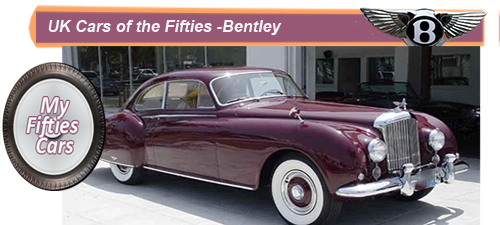
Like so many of the companies that pioneered the birth of the UK car industry in the 20th century, the early history of Bentley was about one man, W. O. Bentley.
W.O and his brother H. M.Bentley had a dream which they fulfilled after the end of the First World War when they founded Bentley Motors Limited.
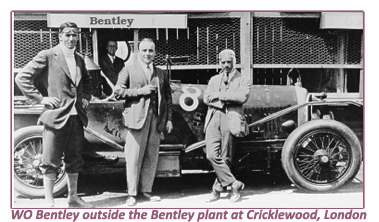 From the outset, there was little doubt that W.O. was the driving force behind the company. A talented designer and engineer, W, O was sadly lacking in business acumen, meaning that just three years after their founding Bentley found themselves in severe financial trouble,
From the outset, there was little doubt that W.O. was the driving force behind the company. A talented designer and engineer, W, O was sadly lacking in business acumen, meaning that just three years after their founding Bentley found themselves in severe financial trouble,
The uncertainty that this situation caused placed a cloud on the horizons of the company, whose goal was to make great cars, without paying too much attention to the bottom line. Make great cars they did, and cars which began to gain something of a cult following in the Twenties in upper-class England.
 After a Bentley 3 Liter Sport snatched victory in the most dramatic of fashions at the Le Mans24, W. O. Bentley’s cars became well-known and highly regarded among a growing group of wealthy British motor car enthusiasts, who became known as the "Bentley Boys."
After a Bentley 3 Liter Sport snatched victory in the most dramatic of fashions at the Le Mans24, W. O. Bentley’s cars became well-known and highly regarded among a growing group of wealthy British motor car enthusiasts, who became known as the "Bentley Boys."
![]()
 One member of this group that stood out, in particular, was Woolf Barnato who stepped in and helped the company with financing on condition that he gained complete control over the company confining W.O. to the role of a mere employee.
One member of this group that stood out, in particular, was Woolf Barnato who stepped in and helped the company with financing on condition that he gained complete control over the company confining W.O. to the role of a mere employee.
Under Barnato’s leadership, the company repeated their success on the racing circuits, winning Le Mans in four successive years from 1927 to 1930.
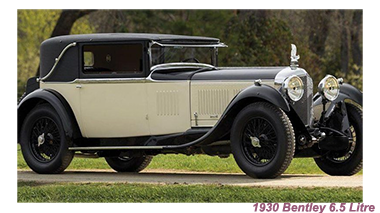 Barnato’s timing could have been better, with the company’s now considerably healthier fortunes were once again were severely diminished- this time by the Stock Market Crash of 1929.
Barnato’s timing could have been better, with the company’s now considerably healthier fortunes were once again were severely diminished- this time by the Stock Market Crash of 1929.
Following the Crash came the Great Depression, which ran through most of the Thirties, decimating the luxury car market throughout the world. The demand for Bentleys was dramitically reduced.
With Bentley tottering on the brink of bankruptcy. Woolf Barnato succeeded in negotiating a form of working partnership with Napier & Son, another UK manufacturer of quality motor vehicles.
 UTo everyone's surprise, just before contracts were about to be signed Napier were surprisingly outbid by a little-known organisation known as the British Central Equitable Trust.
UTo everyone's surprise, just before contracts were about to be signed Napier were surprisingly outbid by a little-known organisation known as the British Central Equitable Trust.
When the contracts were signed it rapidly emerged that the British Central Equitable Trust was nothing more than a front for Rolls-Royce, the world leader in the luxury car sector.
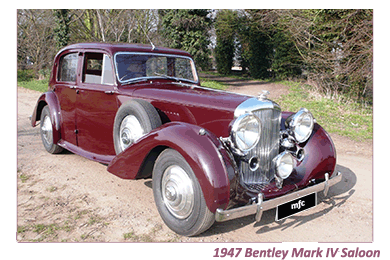 Delighted with the coup that they had pulled off, Rolls-Royce wasted little time in forming a new company and transferring all of the Bentley production to Rolls-Royce’s plant in Derby.
Delighted with the coup that they had pulled off, Rolls-Royce wasted little time in forming a new company and transferring all of the Bentley production to Rolls-Royce’s plant in Derby.
Without standing too much on ceremony, Bentley’s production facilities in Cricklewood were rapidly barred and shuttered.
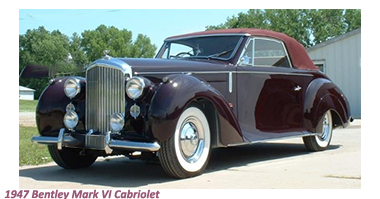 Under the new arrangement, Rolls-Royce and Bentley never produced complete cars but instead supplied a full drivable chassis to a specialist coachbuilder, usually Park Mulliner, to finish the body.
Under the new arrangement, Rolls-Royce and Bentley never produced complete cars but instead supplied a full drivable chassis to a specialist coachbuilder, usually Park Mulliner, to finish the body.
This situation remained until the end of World War II when Rolls-Royce decided that in the future they would produce cars, under both the Bentley and Rolls-Royce marques, at their factory in Crewe.
Production was based on a "standard steel" four-door saloon body.
This procedure went on to become Rolls-Royce/ Bentley’s working routine which carried on to the next generation.
Most of the Bentleys produced in the Fifties were four-door saloons, with the body built by some UK coachbuilders.
![]()
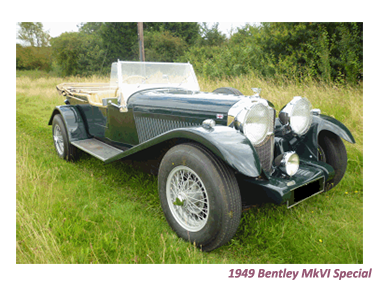 After leaving Rolls Bentley joined Lagonda, remaining with them for a number of years, before winding down a gear or two to become a successful designer and consultant within the auto industry, active well into the Sixties.
After leaving Rolls Bentley joined Lagonda, remaining with them for a number of years, before winding down a gear or two to become a successful designer and consultant within the auto industry, active well into the Sixties.
At the end of the Second World War Bentley took their time to release any new models the first being the R-Type in 1952, a steady seller that would not be replaced until 1955 on the release of the larger, more ostentatious S-Series.
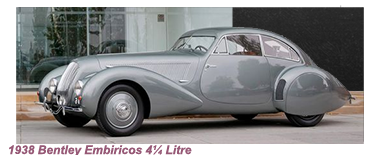 This model carried on for ten successful years, inheriting a brand-new V8 engine in 1959.
This model carried on for ten successful years, inheriting a brand-new V8 engine in 1959.
The Rolls-Bentleys of the Sixties may have lacked a little of the status of the actual Rolls-Royce models, but that Gothic radiator style still retains something of a sporting air, even if the rest of the model has become progressively opulent and luxurious.
![]()
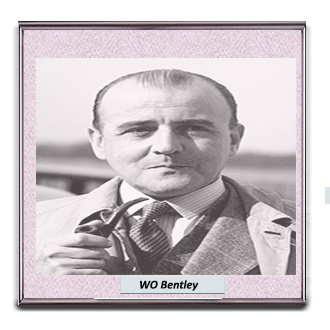
When the third post-war generation VY of Bentleys and Rolls-Royces arrived in 1965, the changeover was virtually complete. Apart from using the still-modern 6230cc V8 engine, and its automatic transmission, every single component was new.
The Rolls-Royce Silver Shadow version of this car went on to become the best-. selling car of that marque: it was only marketing pressures which gradually, pushed the Bentley T-Series equivalent back into the shadows even though the only difference between the brands was the radiator and badging, for mechanically and in their equipment they were identical.
 Power steering was standard, as were disc brakes on all four wheels. The steering, brakes and self-leveling suspension were supplied with high-pressure hydraulic power from pumps and accumulators on the engine.
Power steering was standard, as were disc brakes on all four wheels. The steering, brakes and self-leveling suspension were supplied with high-pressure hydraulic power from pumps and accumulators on the engine.
Bentley and Rolls-Royce continued with this tried and tested production formula until close to the end of the 20th century, when the two marques were separated once again and sold off, with Bentley becoming a subsidiary of Volkswagen while BMW swallowed up Rolls-Royce.


